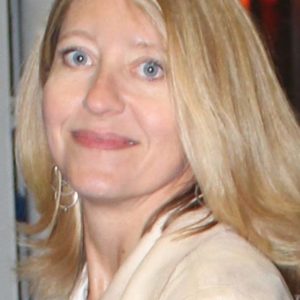
When Keith Williams took the helm of Northbrook, Illinois-based Underwriters Laboratories in 2005 the 118-year-old company was floundering. The company’s UL Mark—the symbol it places on products that pass the rigorous tests it has developed to ensure consumer and employee safety—still commanded respect, but UL was carrying considerable debt, losing market share to competitors and grappling with low employee morale. “It was a real fixer-upper,” recounts Williams, 60, who spent 23 years at GE and served as senior vice president and chief quality officer as well as a divisional president at Medtronic before joining UL. “For me, those are the really fun jobs. I like to fix things.”
Williams began his repair effort with UL’s corporate culture. As the largest, independent, testing laboratory in the U.S. and one of only a handful approved for such testing by the U.S. federal agency Occupational Safety and Health Administration (OSHA), UL had become bureaucratic and siloed. Regional divisions within the company were actually undercutting one another to vie for business, says Williams, who quickly made five moves to address the issue.
Global Incentives. “First, we created a global head of engineering and a global head of field services, leadership roles for people whose sole mission was to harmonize and ‘uniformize’ the work we do around the world,” he explains. “Second, we took away the local measurements driving management incentive plans and we said, ‘Everyone is going to get paid on the same metrics; so if you hoard work in your lab instead of sending it elsewhere, that hurts everybody. We live together and we die together.”
Company First. Williams also changed the compensation program to align everyone behind the company’s success. “I call it ‘pay the company first,’” he says. “Basically, up to the company’s operating profit target, all of the profits go to the company; and only after that target is met, do we start funding the incentive pool.” For example, if UL’s target is $80 million, 100 percent of the first $80 million in profit goes to the company, the next $20 million to the incentive pool, and from there on, funds are split 50/50 between the company and the incentive pool. “At a lot of companies, people think, ‘I’ve got $1 million left in my budget; I should spend it,’” says Williams. “What we’re saying is ‘If you really need to spend that $1 million on our future, please do, but if you don’t spend it, half will go into the incentive pool.’”
Lean Principles While acknowledging that the “lean” management philosophy made famous by Toyota is typically associated with manufacturing, Williams was determined to apply it at UL. “It took us a year to actually figure out how to apply lean[ness] to our business, but we’ve been doing it since 2005 and we’re getting better and better at it,” he reports. “You need to approach it as a way to facilitate a conversation internally about changing the way that you work.”
Leadership Development Before Williams’s tenure, UL had no formal training process. Today the company earmarks 2 percent of its revenue for internal training. While the bulk of those funds go toward technical training, the company also holds two, four-week, leadership development programs per year. “Traditionally, when you became a manager at UL, you were given a business card and a desk, and everything you needed to know about leadership was contained in one of the two,” says Williams. “We’ve now had 175 people go through that class.” UL runs a similar program for executives that involves three, two-week sessions a year.
Breaking Boundaries. More subtle efforts to overhaul the culture were inspired by less-obvious issues, such as one brought to light when an employee mentioned to Williams that he had worked at the company for 21 years and had never been to the third-floor executive offices. “He said, ‘You’re not allowed to go up there unless you’re invited; and if you get invited, that means you’re in trouble,’” Williams recalls. The response? UL relocated four executives to make space for a third-floor meeting room accessible and available for all company meetings. “We didn’t call it the boardroom because that would be [intimidating],” he says. “We called it a new meeting space and we told people, ‘If you need a room this size and it’s available, please use it.’ At first, it was very tentative, but now people use it all the time.”
How did these moves play out? While ultimately successful, the overhaul wasn’t exactly a slam-dunk, says Williams. Toward the end of 2006, it became clear that the company was on track to miss its projected revenues and the internal sharks were circling. “Critics were saying, ‘when push comes to shove and we fall short, these guys will tell us to do whatever it takes to make the revenue,’” says Williams. “The CFO and I talked about it and concluded, ‘If we blink, all credibility is gone,’ so we had to say, ‘Look, this is the situation, but please keep following the business practice. Our belief has been and continues to be that if we do the right thing to delight clients, the business will come.’ And we did miss a little bit.”
Revenues were $1.25 billion in 2011, and UL hasn’t missed an earnings projection since that hiccup in 2006. However, Williams still sees plenty of room for improvement. “What we’re starting to think about now is how to position ourselves as a 21st-century company, because the world has changed in so many ways,” he says. “We have to think about how to lead and engage young people today and how to embrace and use technology to really add value for our clients. Historically, our job has been to stop unsafe products from getting to the marketplace. Now, it’s how do we help our clients get safe products to the market more quickly? And we need to continue the cultural transformation of the company, because you never finish.”
“If you ever come to work and are happy with your current state, it’s time to leave,” he says. “Because I can assure you the next person will come in and be unhappy with a whole bunch of stuff, so you have to have a continuous desire to evolve and change.”




0

1:00 - 5:00 pm
Over 70% of Executives Surveyed Agree: Many Strategic Planning Efforts Lack Systematic Approach Tips for Enhancing Your Strategic Planning Process
Executives expressed frustration with their current strategic planning process. Issues include:
Steve Rutan and Denise Harrison have put together an afternoon workshop that will provide the tools you need to address these concerns. They have worked with hundreds of executives to develop a systematic approach that will enable your team to make better decisions during strategic planning. Steve and Denise will walk you through exercises for prioritizing your lists and steps that will reset and reinvigorate your process. This will be a hands-on workshop that will enable you to think about your business as you use the tools that are being presented. If you are ready for a Strategic Planning tune-up, select this workshop in your registration form. The additional fee of $695 will be added to your total.

2:00 - 5:00 pm
Female leaders face the same issues all leaders do, but they often face additional challenges too. In this peer session, we will facilitate a discussion of best practices and how to overcome common barriers to help women leaders be more effective within and outside their organizations.
Limited space available.

10:30 - 5:00 pm
General’s Retreat at Hermitage Golf Course
Sponsored by UBS
General’s Retreat, built in 1986 with architect Gary Roger Baird, has been voted the “Best Golf Course in Nashville” and is a “must play” when visiting the Nashville, Tennessee area. With the beautiful setting along the Cumberland River, golfers of all capabilities will thoroughly enjoy the golf, scenery and hospitality.
The golf outing fee includes transportation to and from the hotel, greens/cart fees, use of practice facilities, and boxed lunch. The bus will leave the hotel at 10:30 am for a noon shotgun start and return to the hotel after the cocktail reception following the completion of the round.